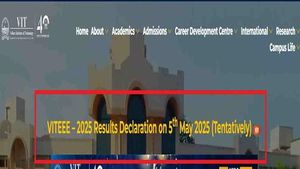The Central Board of Direct Taxes (CBDT) has officially notified the updated Income Tax Return (ITR) forms 1 and 4 for Assessment Year 2025-26, effective from April 29, 2025. This change is set to simplify the tax filing process for many individuals and small business owners.
These simplified forms, ITR-1 (Sahaj) and ITR-4 (Sugam), are designed for taxpayers with a total annual income of up to ₹50 lakh, making them particularly beneficial for salaried individuals, pensioners, and small business owners.
One of the most significant updates is the inclusion of long-term capital gains (LTCG) under Section 112A, allowing individuals to report gains up to ₹1.25 lakh without needing to file the more complex ITR-2 form. Previously, taxpayers with any capital gains were required to use ITR-2, which involved more extensive disclosure requirements.
According to the CBDT, this change reflects a broader effort to streamline the tax filing process. Sandeep Sehgal, Partner-Tax at AKM Global, emphasized that these updates make the filing process more accessible and less burdensome for small investors and salaried individuals. He stated, "This change streamlines the tax filing process, making it more accessible and less burdensome for small investors and salaried individuals, thereby encouraging timely and accurate compliance."
ITR-1 is available for resident individuals with total income up to ₹50 lakh, which includes income from salary, one house property, and other sources like interest. Agricultural income up to ₹5,000 is also included. However, taxpayers cannot use ITR-1 if they have capital gains from the sale of house property or short-term capital gains from listed equity shares and equity mutual funds.
Similarly, ITR-4 is available for individuals, Hindu Undivided Families (HUFs), and firms (excluding Limited Liability Partnerships) who also meet the ₹50 lakh income threshold and derive income from business or profession under presumptive taxation schemes.
Another notable change is the introduction of a new section in both ITR-1 and ITR-4 forms for reporting exempt capital gains under Section 112A. This section requires taxpayers to disclose the total sale consideration, cost of acquisition, and resulting LTCG. This new requirement aims to enhance transparency and compliance monitoring.
For those claiming a deduction under Section 80GG for rent paid where House Rent Allowance (HRA) is not received, it is now mandatory to electronically submit Form 10BA along with the income tax return. Failure to do so may disqualify the claim. This deduction is not applicable to taxpayers opting for the new tax regime under Section 115BAC.
Taxpayers must also provide section-wise details regarding Tax Deducted at Source (TDS) deductions within their ITR. This requirement is part of the government's initiative to improve compliance and reduce mismatches between reported income and tax credits.
Furthermore, the revised forms now require taxpayers to specify the section under which TDS or Tax Collected at Source (TCS) has been deducted, which can be cross-referenced with other tax documents to ensure accuracy.
The deadline for filing ITR for the financial year 2024-25 is July 31, 2025. Taxpayers who do not require an audit must adhere to this deadline to avoid penalties. The government typically notifies ITR forms earlier in the year, but this year's notification was delayed due to the introduction of a new Income Tax Bill in Parliament.
The introduction of these simplified forms is seen as a progressive step towards enhancing taxpayer services, as it reduces the complexity and stress associated with tax compliance. EY India Tax Partner Samir Kanabar noted that allowing individuals with minimal LTCG to use ITR-1 or ITR-4 “reduces the burden of navigating more complex forms.” He added, “This move reflects a clear shift towards enhancing taxpayer services by simplifying the return filing process for individual taxpayers.”
In summary, the updated ITR-1 and ITR-4 forms for AY 2025-26 signify a concerted effort by the government to facilitate easier tax filing for individuals and small businesses, promoting greater compliance and efficiency in the tax system. As taxpayers prepare to file their returns for the income earned during the 2024-25 fiscal year, these changes are expected to make the process smoother and more user-friendly.






